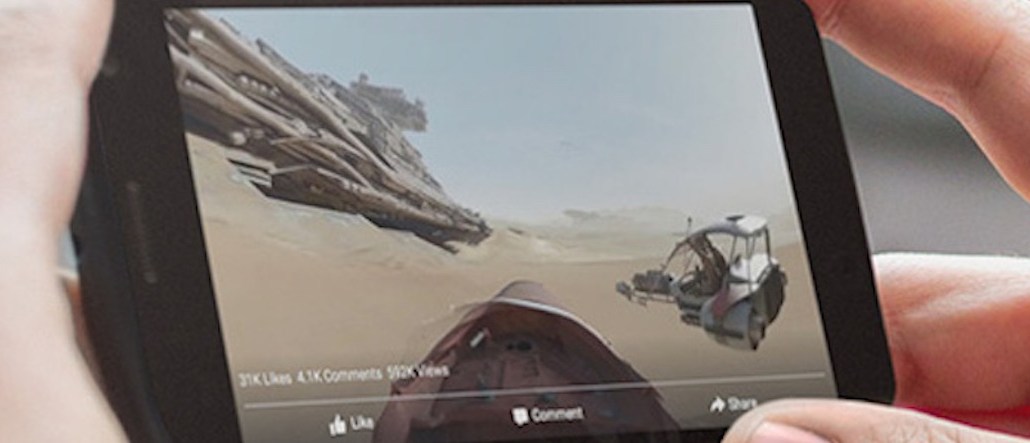Save 50% on a 3-month Digiday+ membership. Ends Dec 5.

Autoplay is everywhere, thanks (or not) to platforms and publishers pushing them onto people’s screens. But advertisers still say they are reluctant to fully trust these ads that count views even as people scroll quickly by, or display in a hidden corner of the screen, simply because they were already playing.
Advertisers also are skeptical of the sound-off feature of autoplay videos, some demanding more assuring guarantees from publishers who have been pushing the format.
WPP, for instance, has a fairly strict view when it comes to video ads. It wants proof they are registering with the consumer on the other end, for one.
“We don’t avoid autoplay. When we can buy with a sound-on, duration guarantee, we are fine. When we cannot, we have started to measure average number of seconds viewed and the recall measures from those views,” said Rob Norman, chief digital officer at WPP’s GroupM.
The policy shows that advertisers aren’t all sold on the power of muted video ads, and when they are without sound, they want feedback that shows a user did pay attention.
Autoplay video used to be considered an online scourge before Facebook ironed out some the kinks and made them silent.
The debate over their effectiveness in advertising is still raging, and it’s wrapped up into questions of what counts as a view. Platforms and publishers have inconsistent standards.
Ad position: web_incontent_pos1
Facebook counts video as being viewed after three seconds. It also has a guaranteed view where a video counts as viewed if it occupies the full screen, regardless of how long it plays. Snapchat counts a view after a video loads, regardless of how long it plays.
“Views need to be held to the same accountability across platforms, and right now it’s like the Wild West,” said Chris Tuff, director of business development at 22squared.
The question of viewability and the effectiveness of ads without sound got attention again this past week when Snapchat finalized its long-anticipated deal with Moat to analyze video ads on its platform.
The deal emphasized that Moat would tell advertisers not just how long consumers viewed ads on Snapchat but how many did so with the sound on. Snapchat contends its video ads stand out from Facebook because of the sound issue, because by one measure 85 percent of Facebook videos are seen without sound on.
“Some brands prefer more traditional in-stream video. That said, there are many high-value autoplay formats where advertisers know exactly what they are getting but see tremendous value because of audience reach, scale, targetability and more,” said David Burch, head of communications at TubeMogul.
Ad position: web_incontent_pos2
Some advertisers who won’t buy autoplay on principle, according to publishers. “From their perspective, they want user initiation to show that there was intent,” said Jarrod Dicker, head of ad products at The Washington Post.
The Post and other video vendors are scrambling to make advertisers more comfortable about going with silent autoplay video.
Publishers who are pushing the format contend that the most effective Facebook videos these days, paid or free ones, are overlaid by bold text to create a narrative when the sound is off. Facebook also teaches brands how to capture a user’s attention in the first three seconds. It’s also introduced pricing plans that can guarantee viewers get to the end if the advertiser pays more.
The Washington Post has developed a tool that lets advertisers create video ads designed for social media, with the sound off.
“The benefits to autostart are massive, and tools that allow for text overlay and more will broaden video to beyond just clicking and listening,” Dicker said.
More in Media

Digiday+ Research Subscription Index 2025: Subscription strategies from Bloomberg, The New York Times, Vox and others
Digiday’s third annual Subscription Index examines and measures publishers’ subscription strategies to identify common approaches and key tactics among Bloomberg, The New York Times, Vox and others.

From lawsuits to lobbying: How publishers are fighting AI
We may be closing out 2025, but publishers aren’t retreating from the battle of AI search — some are escalating it, and they expect the fight to stretch deep into 2026.

Media Briefing: Publishers turn to vertical video to compete with creators and grow ad revenue in 2026
Publishers add vertical video feeds to their sites to boost engagement, attract video ad spend and compete with news creators.
Ad position: web_bfu
